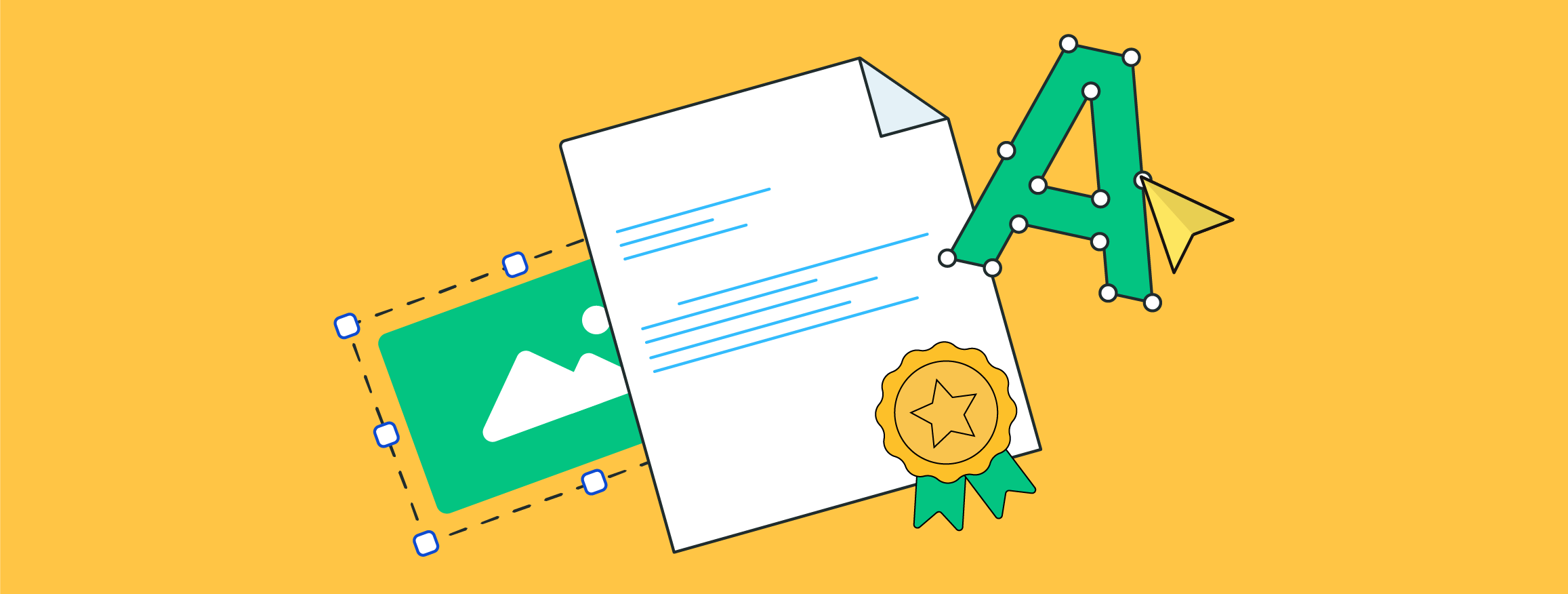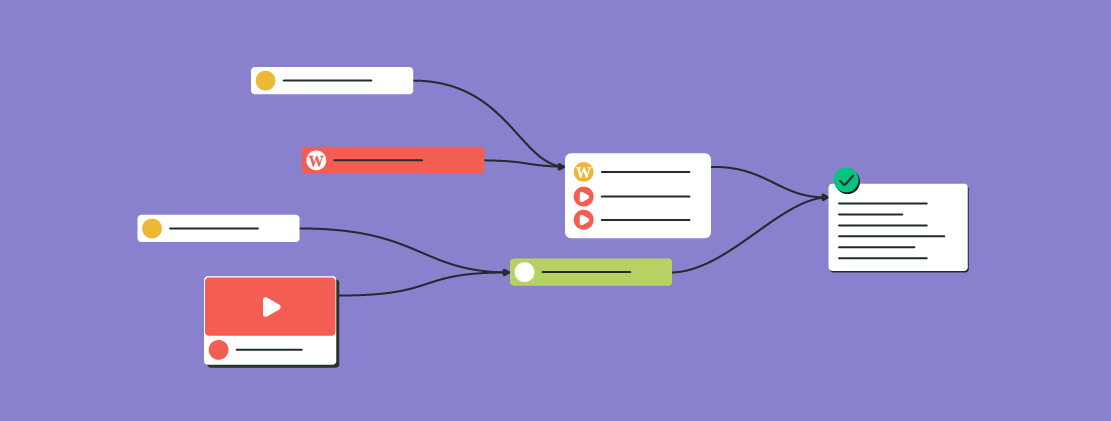A video lesson is a lesson that contains an educational video on a specific topic. It helps educators present their information in an interactive and interesting way.
In this article, we’ll review the pros and types of video lessons. We’ll also unveil how to make a video lesson.
Why are video lessons important in education?
Visual content plays a significant role in education in our digital era. According to statistics, 65% of the population are visual learners. It means that these people remember and learn the information better through videos, images, infographics, special apps, and websites. Videos provide students with an engaging sensory experience. They appeal to a wide audience and enable more efficient processing and memory recall. Video lessons help you present the topic in an interesting way and allow you to see information from different perspectives. They encourage thinking, reasoning, problem-solving, and decision-making.
Video helps people increase knowledge retention. Learners can stop the video and replay it as many times as they need to remember the material. Better yet, they can refresh their knowledge to prepare for exams or tests by reviewing the videos once again. Video lessons are free to access and don’t have any time limitations.
The digital world requires learners to adapt, and that’s why they search for new ways to learn new topics. Videos are visually appealing and can be accessed from any device like a laptop, PC, smartphone, or tablet. Students all over the world can take video lessons if they have the internet.
Video lessons are crucial for learning highly visual topics. Teachers can show everything in detail so that students understand it and see the examples.
Now that you know why video lessons are essential, it’s time to review some more pros. They will help you decide whether you need video lessons for your online course, training, online school, etc.
Read more about online education on our blog!
6 Advantages of Video Lessons
After implementing video lectures in online education, you can reap various benefits. They include improved engagement, knowledge retention, and cost-effectiveness. This section will help you identify all the advantages of video lessons and help you decide whether you need them.
The advantages include:
- higher students’ engagement;
- reduced cognitive overload;
- higher knowledge retention;
- cost-effectiveness;
- easy access;
- personalized learning experience.
Now that you know the benefits, let’s unveil the types. The next section will help you figure out what type of video lecture suits your main purpose.
Types of Video Lectures
To teach students, you can use various formats of video lessons. In this section, we’ll uncover the most effective types. They will help you communicate the necessary information to your learners.
- Lecture capture. It’s a recording of classroom lectures and uploading them to the internet so students can see them. Once you type the query in the search field on YouTube, you can find various video lessons on different topics. These lectures are designed to help students understand the topics. Learners can find appropriate lectures and watch them as many times as necessary.
- Voice-over presentation. It’s usually a PowerPoint presentation accompanied by a voice of a teacher. An educator explains the information included in the slides of a presentation. With this video lecture, you can combine visual information with audio explanation and make the most of the materials provided.
- Talking head video. It can be real-time or pre-recorded video where a teacher speaks on the subject. This type doesn’t require any knowledge of animation. A teacher needs to make a script and explain the topic without reading the script. While recording this video lesson, you can take a break, re-record some parts, or cut them off, if necessary. It only works with pre-recorded video lessons. If teachers plan to give live lectures, they should be prepared enough to avoid peeping into the records and stuttering.
- Interactive lecture. It’s a lesson that includes different activities and implies a teacher using video, adding audio, PowerPoint slides, etc. You can switch slides and videos to make your lesson more interactive and engaging.
Now that you know the types, it’s time to figure out how to create a video lesson. Step by step guide will allow you to make the process more efficient.
How to make a video lesson?
If you replace your sit-in lectures with video lessons, you can improve students’ engagement and reduce your workload. Follow the 6 steps below.
- Select the main topic. If you have expertise in several issues and want to share your knowledge with others, you need to narrow down your topics. Choose the point of interest you’d like to talk about the most. Since people get bored with long videos, you need to prepare a lesson in which you talk to the point, and share useful materials, tips, guides, etc. For example, if you are a fitness coach, demonstrate to people some effective exercises to keep their bodies fit and healthy. Provide helpful exercises to people with back pain, teach prenatal yoga, or help improve posture.
- Research data. Search for information about your topic and choose the most suitable materials for the first lesson. For instance, if you decide to record video lessons teaching yoga for beginners, make sure to explore all information available. It’s necessary to ensure that people don’t get hurt or get trauma while exercising for the first time. Research the techniques and different approaches.
- Create slides. If you create instructional videos, make sure that they are highly focused. Use visuals to highlight the most important points and create short instructions. Remember that learner engagement reduces after the 6th minute of your video. Moreover, it falls drastically if the slides are overloaded with information. Keep everything short and sweet and include the essential facts.
- Analyze competitors. Search YouTube or other educational platforms to figure out what type of video lessons students like. Search your competitors and watch their video lectures. Read comments and reviews. It will help you identify the advantages and drawbacks. As a result, you’ll be able to create video lessons people enjoy. Moreover, you’ll find out students’ real intentions, needs, and demands.
- Record your video lessons. There are several things you should pay attention to when recording a video: recording device, microphone, and screencasting program. Since videos have a major impact on your audience, you need to create them right. It doesn’t mean that you should buy an expensive camera to create a quality lesson. You can use your old camera or even a smartphone to record your lectures. Feel free to use your phone for video lessons of less than 10 minutes. If your video is longer, then consider using a camera. It has big storage space and allows you to record for hours. To keep focus and prevent your video from shaking, use a tripod. This way, you’ll be able to create high-quality video lessons. You should also take care of the sound. Make sure that your microphone works properly.
- Use an educational platform. Once your video lessons and other materials for your online course are ready, search for the appropriate platform. It will help you combine all your pieces of content into an informative online course. SendPulse’s free course builder enables you to create lessons and add as many videos as you wish. Better yet, you can insert images, PDFs, downloadable documents, and text to make your course more engaging. You can design tests and add them after each video lesson to check students’ knowledge and skills. This way, you’ll be able to track their progress.
Congrats, now you know what a video lesson is and why it’s essential. Hope that our instructions will help you create an outstanding video lesson for your students and communicate your message.
References:
- This article uncovers how to learn from videos.
- In this article, you’ll find information about video in teaching.
Last Updated: 12.09.2023







or